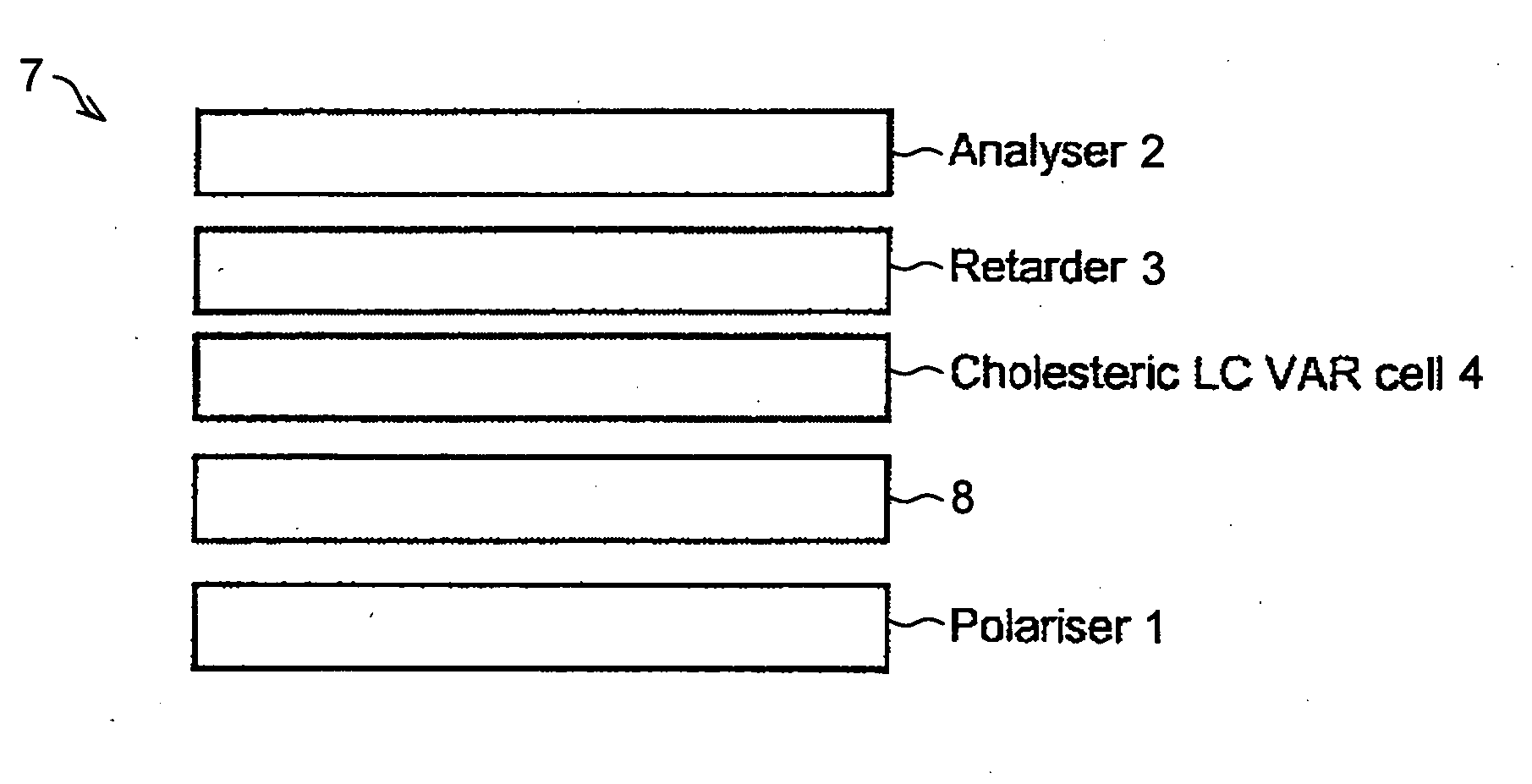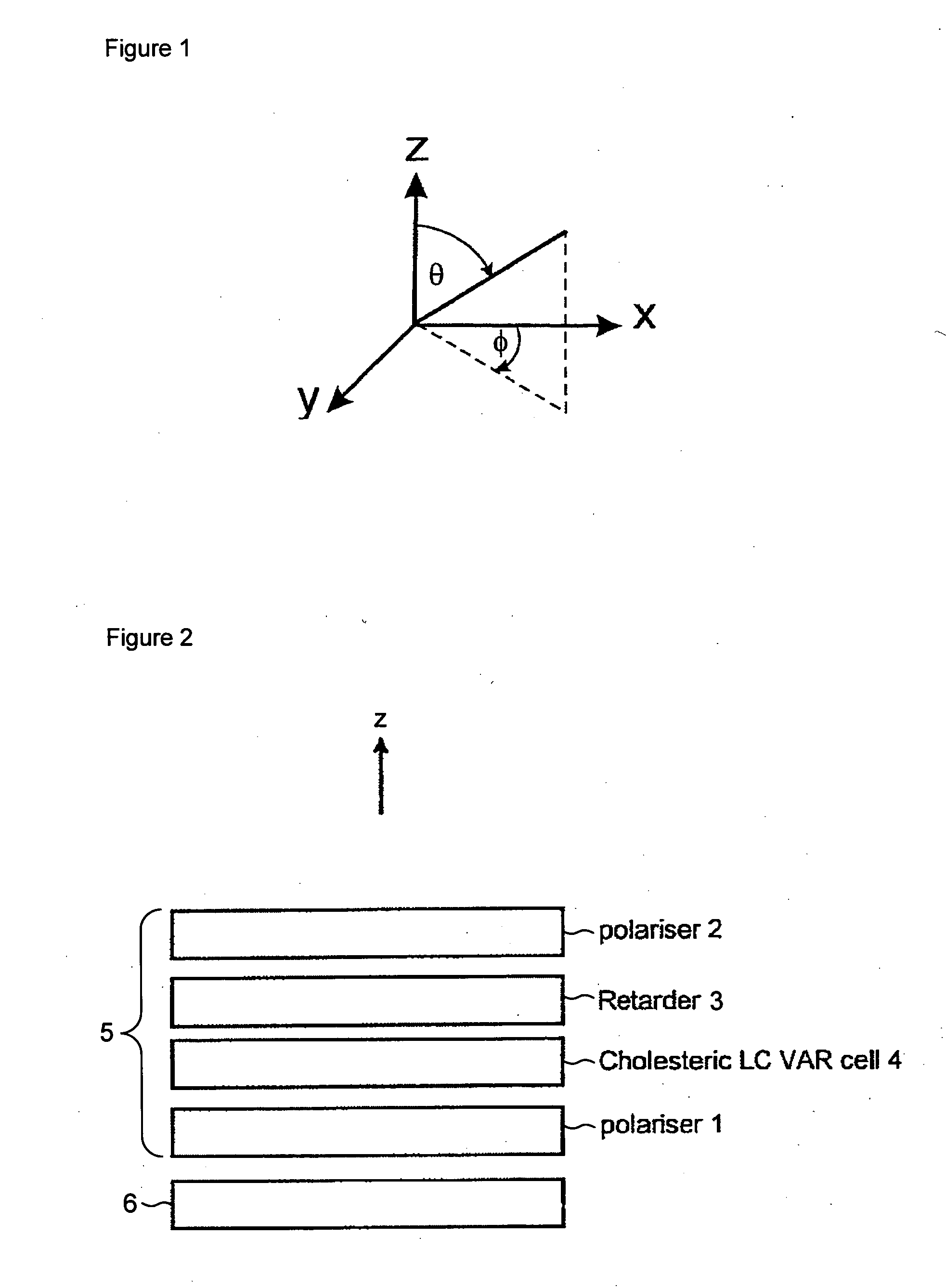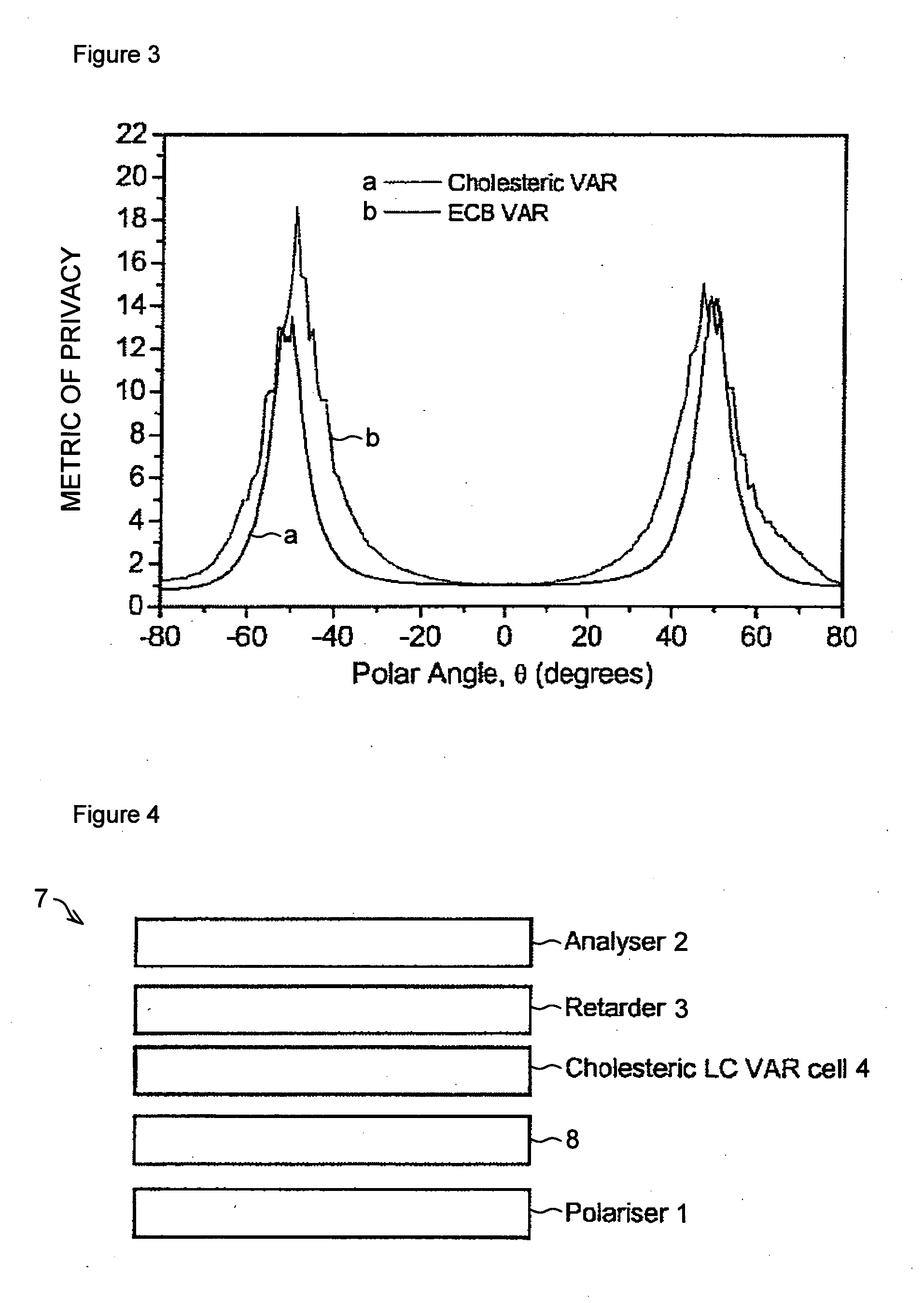Liquid crystal cell and a display
a liquid crystal cell and display technology, applied in the field of liquid crystal cells, can solve the problems of not being able to easily switch off to allow viewing, never achieving privacy in a plane parallel to the microlouvre groove, and adding bulk to the display, so as to prevent, reduce, and improve the effect of privacy
- Summary
- Abstract
- Description
- Claims
- Application Information
AI Technical Summary
Benefits of technology
Problems solved by technology
Method used
Image
Examples
Embodiment Construction
[0067]FIG. 1 illustrates the co-ordinate system used in this application. It is assumed that a display face is parallel to the x-y plane, and that light propagates generally along the z-direction. The out-of-plane angle, or polar angle, represents the angle between a direction and the z-axis, and is denoted by q. The in-plane angle, or azimuth angle, represents the angle between the x-axis and a projection of a direction on the x-y plane, and is denoted by f.
[0068]FIG. 2 is a schematic sectional view of a liquid crystal cell 5 of the present invention. The liquid crystal cell 5 comprises a cholesteric liquid crystal cell 4 and a retarder 3 and disposed in an optical path through the cholesteric liquid crystal cell 4. The cholesteric liquid crystal cell 4 contains a layer of cholesteric material disposed between upper and lower transparent substrates (not shown). Other components of the cholesteric liquid crystal cell 4 such as, for example, electrodes to allow the layer of cholester...
PUM
| Property | Measurement | Unit |
|---|---|---|
| twist angle | aaaaa | aaaaa |
| viewing angle | aaaaa | aaaaa |
| refractive index | aaaaa | aaaaa |
Abstract
Description
Claims
Application Information
 Login to View More
Login to View More - R&D
- Intellectual Property
- Life Sciences
- Materials
- Tech Scout
- Unparalleled Data Quality
- Higher Quality Content
- 60% Fewer Hallucinations
Browse by: Latest US Patents, China's latest patents, Technical Efficacy Thesaurus, Application Domain, Technology Topic, Popular Technical Reports.
© 2025 PatSnap. All rights reserved.Legal|Privacy policy|Modern Slavery Act Transparency Statement|Sitemap|About US| Contact US: help@patsnap.com



